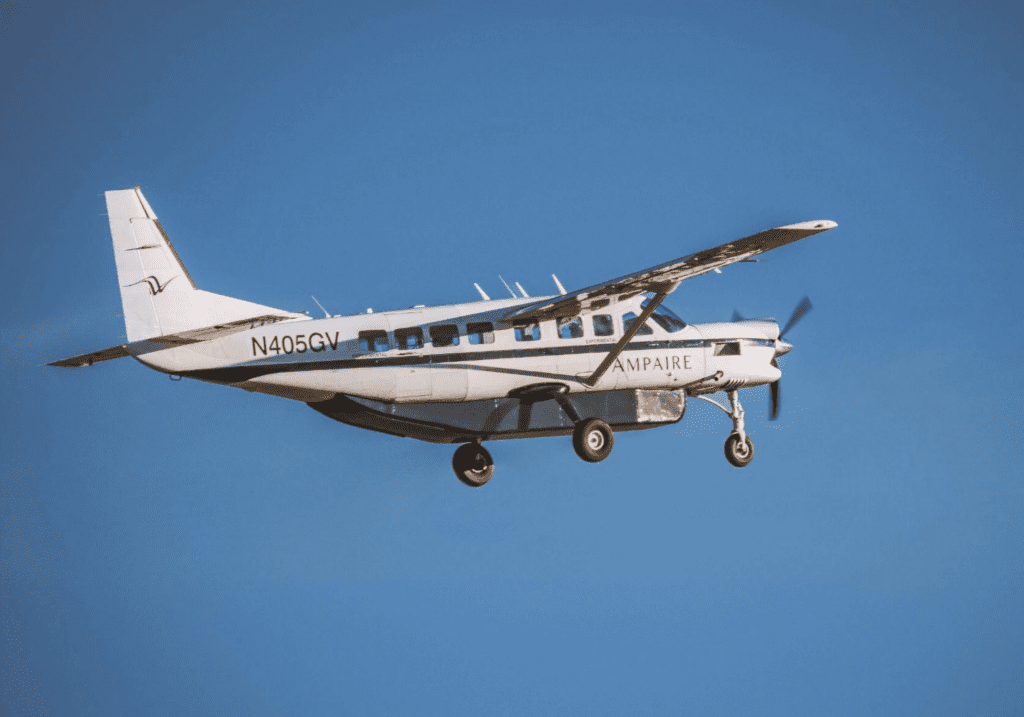
Ampaire’s Eco Caravan aircraft, an upgraded Cessna Grand Caravan, made its first flight last week on a fully-integrated hybrid-electric propulsion system. (Photo: Ampaire)
Ampaire has achieved a major milestone using a modified Cessna Grand Caravan. The Los Angeles-based electric aircraft developer flew its first hybrid-electric regional aircraft on a 30-minute test flight above southern California during the early morning hours of Friday, Nov. 18. This test flight shows promising success for the developer’s integrated propulsion system.
The retrofitted Cessna Grand Caravan is one of several achievements Ampaire has reached within the past year. The company broke a record in July 2022, when its Cessna 337 Hybrid-Electric demonstrator performed a 1,135 mile journey nonstop from California to Oshkosh, the longest route ever flown by a hybrid-electric aircraft.
Despite recent success, decarbonizing the aviation industry comes with major challenges. As Ampaire CEO Kevin Noertker explained in the announcement, “Fully-electric aircraft are range limited because of the weight and energy capacity of current-generation batteries. Hybrid-electric aircraft, however, can preserve the range and utility of today’s aircraft. That is why we are focused on hybrid-electric propulsion for a series of increasingly capable regional aircraft. It’s a way for the airline industry to decarbonize more quickly and also to benefit from lower operating costs.”
The Cessna Grand Caravan used in Ampaire’s recent test flight features an integrated propulsion system that includes both a compression ignition engine and an electric engine. A battery pack supplied by EP systems was placed in a body fairing of the aircraft, which helped preserve capacity for passengers and cargo.
On Nov. 18 at 7:49 AM, Ampaire’s Eco Caravan departed from Camarillo Airport for its 33-minute test flight. At full power, the aircraft climbed to 3,500 feet using a combination of power from both its electric and combustion engines. For about 20 minutes, test pilot Elliot Seguin tested various power settings and monitored readings on his instruments. Afterward, Seguin flew the aircraft back to Camarillo Airport, touching down at around 8:22 AM.
The Eco Caravan, while still using some traditional aviation fuel, can cut emissions by up to 70% while cutting operating costs by 25% to 40%. It does this without sacrificing range capabilities. In fact, with eight passengers, the Eco Caravan can actually fly further than traditional Grand Caravans because it boasts a maximum range beyond 1,000 miles.
While this news is positive for Ampaire and the cause for sustainable air travel, the industry still lacks certain infrastructure key for the widespread use for aircraft like the Eco Caravan. While it can charge its batteries in the air, charging stations at airports across the country is one of many considerations that will need to be made prior to widespread utilization.
Ampaire seems optimistic about the future of its Eco Caravan. Because it is not an entirely new aircraft design, it does not need a full aircraft certification program—only a supplemental type certificate (STC). With this in mind, Ampaire hopes to receive certification by 2024.
Regardless, Ampaire has shown that more sustainable air travel is just around the corner. The Eco Caravan could be the first of many innovations made for the timely improvement of the aviation industry.